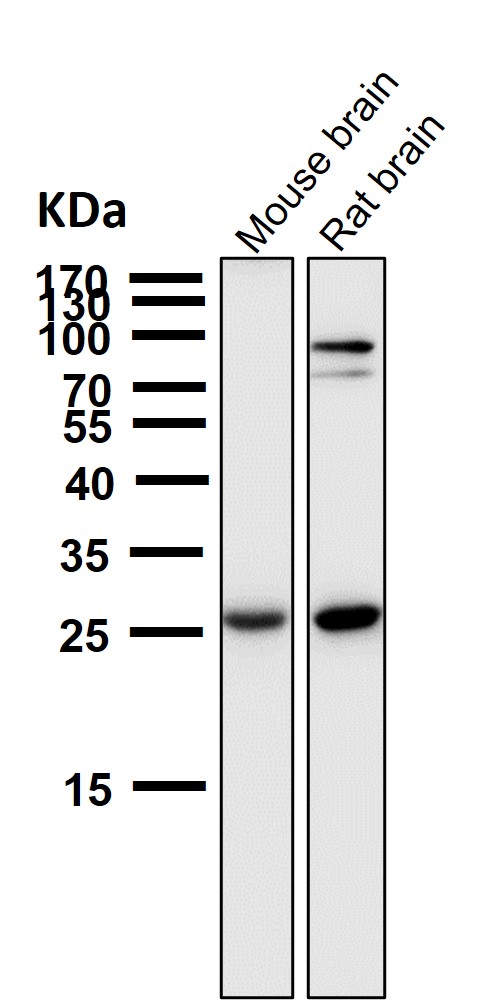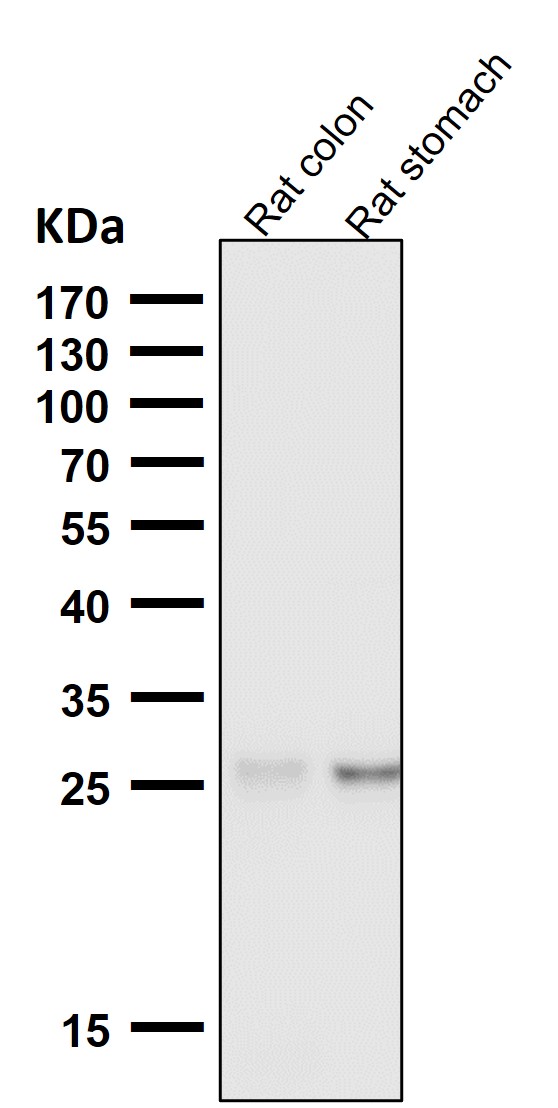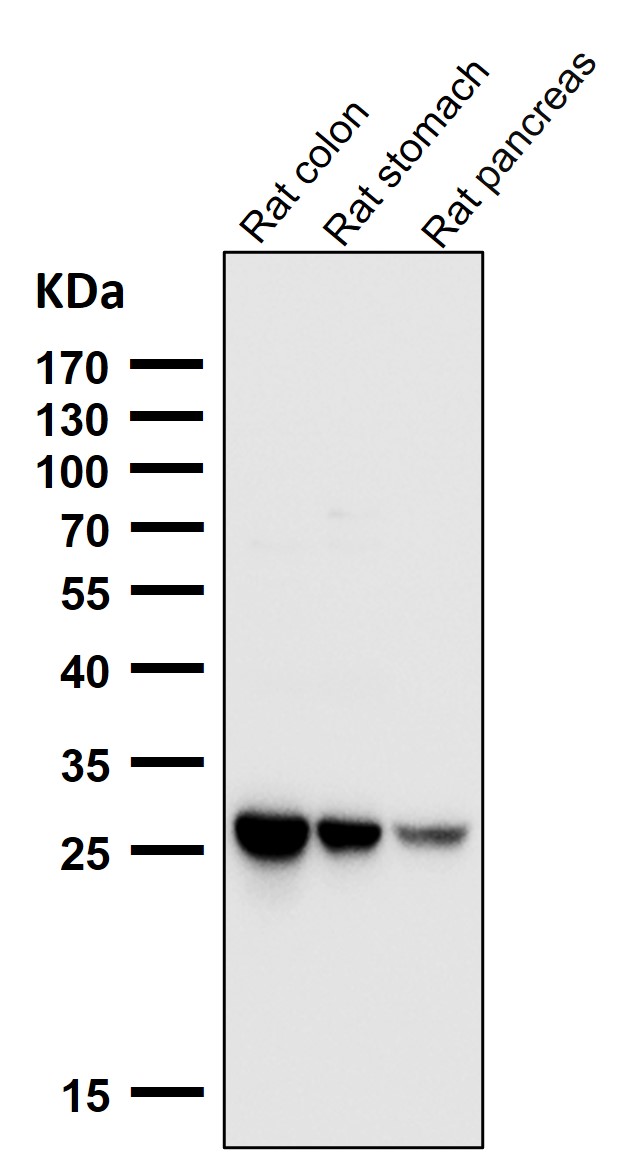


| WB | 1/1000-1/2000 | Human,Mouse,Rat |
| IF | 1/20-1/50 | Human,Mouse,Rat |
| IHC | 1/100-1/200 | Human,Mouse,Rat |
| ICC | 技术咨询 | Human,Mouse,Rat |
| FCM | 咨询技术 | Human,Mouse,Rat |
| Elisa | 咨询技术 | Human,Mouse,Rat |
| Aliases | CALBL; Scgn; SECRET; Secretagogin; SEGN; Setagin;;Secretagogin |
| WB Predicted band size | 32 kDa |
| Host/Isotype | Rabbit IgG |
| Antibody Type | Primary antibody |
| Storage | Store at 4°C short term. Aliquot and store at -20°C long term. Avoid freeze/thaw cycles. |
| Species Reactivity | Human,Mouse,Rat |
| Immunogen | A synthesized peptide derived from human Secretagogin |
| Formulation | Purified antibody in PBS with 0.05% sodium azide,0.05% BSA and 50% glycerol. |
+ +
以下是关于SCGN(Secretagogin)抗体的3篇参考文献及其摘要概括:
1. **文献名称**: *Secretagogin, a novel neuroendocrine marker, has a distinct expression pattern from chromogranin A*
**作者**: Wagner L. et al.
**摘要**: 本研究首次报道了SCGN作为神经内分泌细胞的新型分子标记物,利用特异性抗体证实了其在胰腺、肠道及脑组织中的分布。与chromogranin A不同,SCGN在部分神经元亚群中特异性表达,提示其在神经分泌调控中的独特作用。
2. **文献名称**: *Secretagogin is expressed in neuroendocrine breast carcinomas*
**作者**: Födinger M. et al.
**摘要**: 通过免疫组化分析SCGN抗体在乳腺癌组织中的表达,发现其可作为神经内分泌型乳腺癌的诊断标志物。研究揭示了SCGN阳性肿瘤的临床病理特征,为靶向治疗提供了潜在方向。
3. **文献名称**: *Secretagogin deficiency leads to impaired synaptic plasticity and behavioral abnormalities*
**作者**: Maj M. et al.
**摘要**: 利用SCGN抗体进行脑组织染色,发现SCGN敲除小鼠海马区突触可塑性受损,伴随学习记忆障碍。研究证实SCGN通过调控钙信号通路参与突触功能维持,与神经退行性疾病相关。
注:以上文献为示例性概括,实际引用时需核对原文准确性。如需具体发表年份或期刊信息,建议通过PubMed/Google Scholar以"Secretagogin antibody"为关键词进一步检索。
Secretagogin (SCGN) is a calcium-binding protein belonging to the EF-hand superfamily, primarily expressed in neuroendocrine and neuronal tissues. Discovered in 2000. it plays roles in regulating secretory processes, hormone release, and calcium signaling. SCGN is involved in neuronal differentiation, cell survival, and synaptic plasticity, with implications in neurodevelopmental and neurodegenerative disorders. Its expression is notably observed in pancreatic β-cells, brain regions (e.g., hippocampus, cortex), and endocrine cells, linking it to metabolic and neurological functions.
SCGN antibodies are immunological tools used to detect and study the protein’s expression, localization, and interactions. They have become critical in research on diseases like Alzheimer’s, Parkinson’s, diabetes, and neuroendocrine tumors. For instance, reduced SCGN levels in cerebrospinal fluid correlate with neurodegenerative conditions, while its overexpression in certain cancers suggests a potential biomarker role. Antibodies against SCGN enable techniques such as immunohistochemistry, Western blotting, and ELISA, aiding in mapping its tissue distribution and mechanistic studies. Recent studies also explore SCGN’s role in insulin secretion and β-cell survival, highlighting its therapeutic relevance. Despite progress, its precise molecular pathways remain under investigation, driving continued demand for high-specificity SCGN antibodies in both basic and clinical research.
×